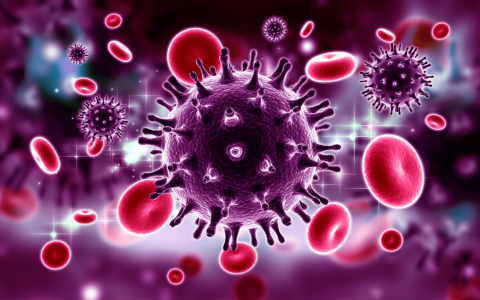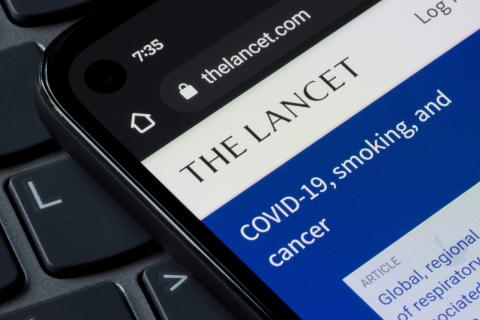Reaction: First woman reported to be cured of HIV after bone marrow transplant
A study published in the journal Cell shares the case of the "New York patient", a woman with leukaemia and HIV who identifies as "mixed race" and has been free of the virus since 2017. She would be the first woman to be cured of the virus after a bone marrow transplant and there are now four such cases, along with patients in Düsseldorf, Berlin and London. The method involves transplanting HIV-resistant stem cells, this time from umbilical cord blood.

Jose Alcamí - VIH mujer NY EN
Pepe Alcamí
IDIBAPS researcher and scientific director of the HIV Unit at Hospital Clínic de Barcelona
The study published in Cell reports the fourth case of a patient in whom HIV has apparently been eradicated from the body by bone marrow transplantation. The study is robust and the conclusions are supported by the data. The limitations of these studies are twofold: we must allow more time to ensure that the patient is cured, but from previous experience with the so-called Berlin and London patients, three years is a reasonable time to say - cautiously - that the patient is cured. The second limitation of the study is that it is of no practical use in the therapeutic management of patients living with HIV. A bone marrow transplant is a risky medical intervention with high mortalities (up to 40%) that is only indicated because the patient has a haematological cancer that does not respond to treatment; it is not transplanted because he or she is infected with HIV.
The case published in Cell (black female patient from New York) was presented in 2022 at a congress and made a lot of media noise, but has not been published until now. The third case, called the Düsseldorf patient, was published in Nature Medicine a few weeks ago, so the New York patient is actually the fourth published case, even though it was reported a year ago. Moreover, it has now been followed up for 3-4 years, which is the period of time that is considered safe to speak of a cure.
The reported case has some characteristics that make it different from previous cases. The most important difference is that the transplant is not carried out with stem cells from an adult donor, but obtained from the umbilical cord. When we are born, progenitor cells are more 'adaptable' to different genetic contexts. An adult stem cell marrow transplant requires a complete, 100% genetic identity in a number of genes that are like a genetic ID card for the transplant. However, cord cells do not require 100 % identity, but 50 % identity is sufficient. Suppose the recipient's ID number is 12345678; the donor's ID number must have the same numbering 2345678, but the cord blood ID is more flexible, it would need to match 4 numbers, for example 1,2,n,4,n,6,n,n,8, or 1,n,3,n,n,n,6,7,n .... where n can be any number, so the chances of having a donor increase exponentially. This strategy has proven to be effective in the patient and opens a way to find a larger number of donors per candidate patient.
An important aspect regarding race is that the existence of the HIV-resistant genetic deletion (the so-called delta32 in homozygosis) is low in the Caucasian population (1%) but virtually non-existent in the African population, so the chances of having a 'two-for-one' donor who will cure me of leukaemia and HIV are virtually zero. Donation from cord blood cells is therefore an excellent strategy to overcome this obstacle.
The case has some peculiarities. Cord cell transplantation is complemented by an autologous (adult stem cell) transplantation. This is important because the latter allows time for the slower cord cell transplant to take hold and grow, thus temporarily protecting the patient from infectious complications. The second interesting aspect is that HIV is detected at a very low level at the beginning of the transplant. This tells us that the virus persists despite treatment and hence the importance of transplantation with HIV-resistant cells because otherwise this residual virus would spread and re-infect the donor cells. The same phenomenon is seen in the Düsseldorf patient published a few weeks ago in Nature Medicine. In other words, if we want to cure these exceptional patients, the donor must have the genetic variant resistant to infection. The third interesting aspect is that there is no 'graft-versus-host disease', a reaction of the transplanted system that attacks the cells of the recipient patient. It was postulated that this reaction might have destroyed the last infected cells in the London and Berlin patients, but the mechanism does not seem to be as important as we had given it credit for, at least in this case.
A strange fact is that the transplant patient's cells are resistant to HIV variants that do not use the CCR5 receptor. There are two HIV entry gates into the cell. CCR5 is the most important one, but there is a second gate for minority variants called CXCR4. The donor cells have the CXCR4 receptor, that second gate, and yet the researchers fail to infect the cells in the test tube with that variant of the virus. It is a result that is difficult to explain, but not very relevant from the point of view of the patient's evolution.
In short, yet another case of cure by bone marrow transplantation in a patient with blood cancer, interesting because the use of cord blood increases the chances of finding a compatible donor. But we should not give false hope: this treatment is not possible, feasible or desirable for the vast majority of patients living with HIV for whom conventional antiviral medication allows them to live a long life and an excellent quality of life.
Hsu et al.
- Research article
- Peer reviewed
- Experimental study
- Case study
- People


